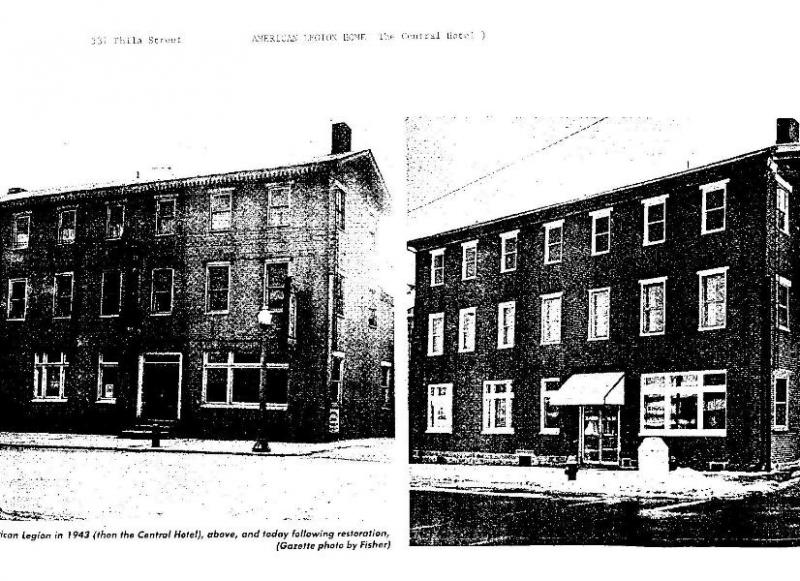
"The American Legion stands for service to community, state and nation," Elias said. "We've done our stint for state and nation, and now we want to do our part for the community."
The history of Indiana's oldest hotel is replete with rumor, suspicion and a sprinkling of established facts. For instance, the building, erected in about 1850 by W.W. Caldwell, according to some records, first served as a nail manufactory. Sometime later, Caldwell converted the stately structure into the Black Horse Inn.
Around 1855, Charles Gompers bought the building and changed the name to Gompers Hotel. Historical accounts indicate Gompers built a "monster stable" at the rear of the building, occupied now by a parking lot. Measuring 100-by-60 feet, the stable was reportedly capable of sheltering 150 horses.
After the Civil War, a C. Detwiler reportedly resumed the name Black Horse Inn, and Michael Sweeny continued the name until 1880. According to historical accounts, the inn became the Central Hotel in 1906. It had 27 rooms, each available for $1.50 a day.
The American Legion bought the historic building in 1943 for $23,000, said Elias. Forty years later, it was "either repaint or renovate", he said, and the 750 post members chose the latter as their contribution to the community.
Having previously remodeled the structurally sound interior, the association went to work on the exterior. It hired the Westmoreland Waterproofing Co. to wash down the brick with acid solution, followed by a warm water rinse. Next, the windows were repainted, and in about four weeks the building looked like new - or, more accurately, old.
Today, the American Legion, remaining consistent with its community-minded goals, provides space in the building's original kitchen to the Meals on Wheels Program. Upstairs are offices of the Governor's Veterans Outreach and Assistance Center and the Veterans Administration's vocational rehabilitation specialist.
The organization is planning to add a sign to its awning, but is giving it thoughtful consideration to be sure it won't detract from the historical impact of the building.
The Douglass Building and the American Legion provide two more examples of what community pride, combined with good business sense, can accomplish for a historically and architecturally rich downtown such as Indiana.
